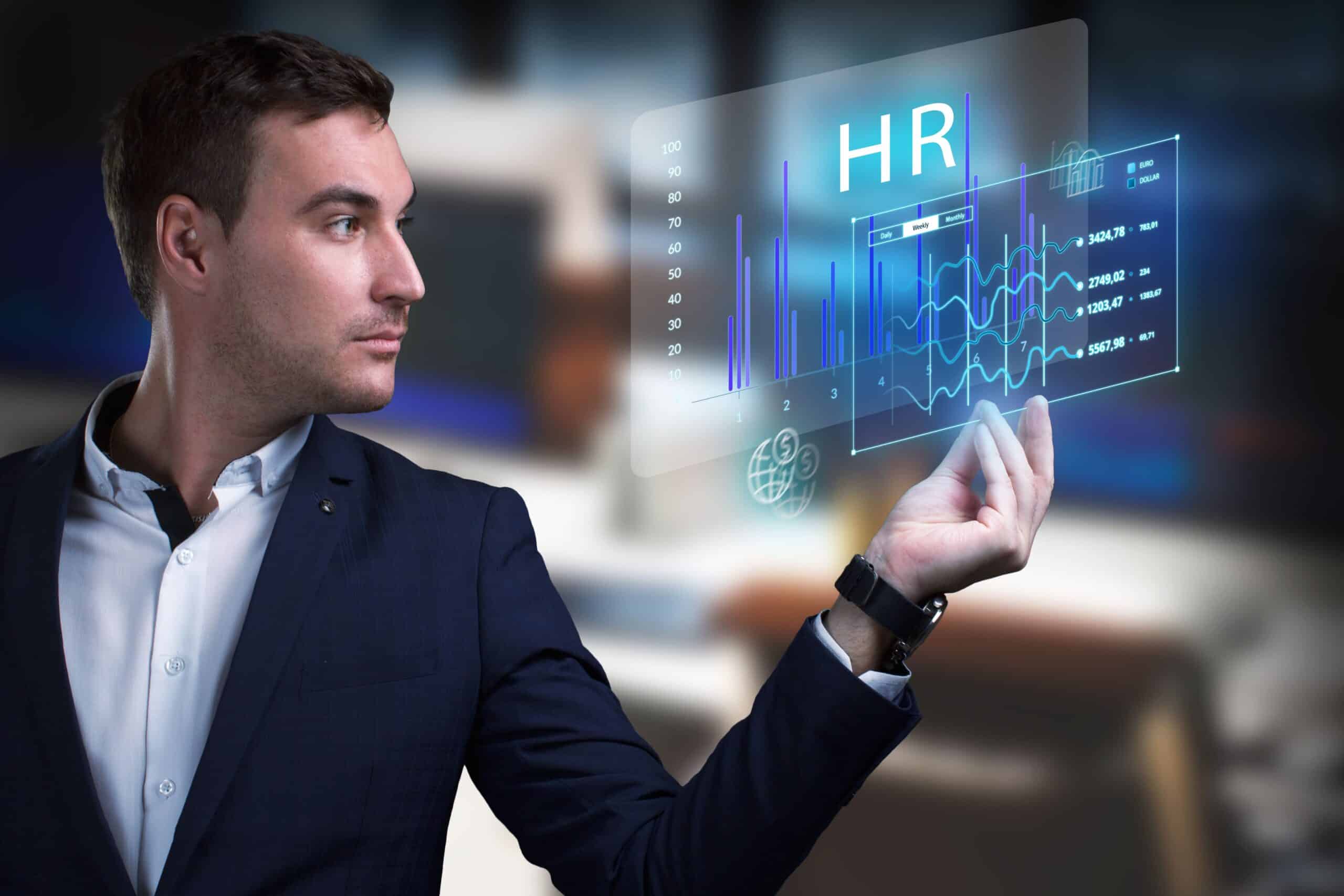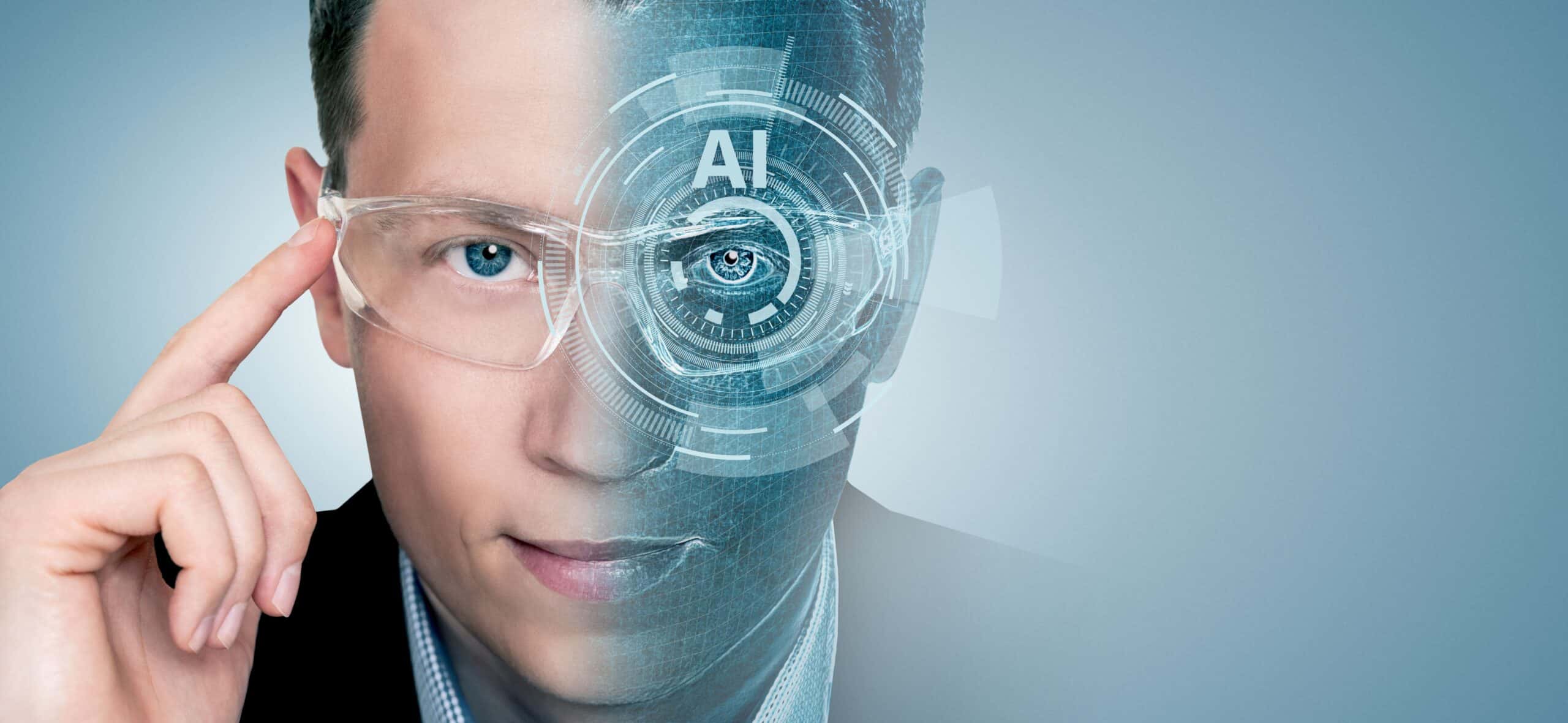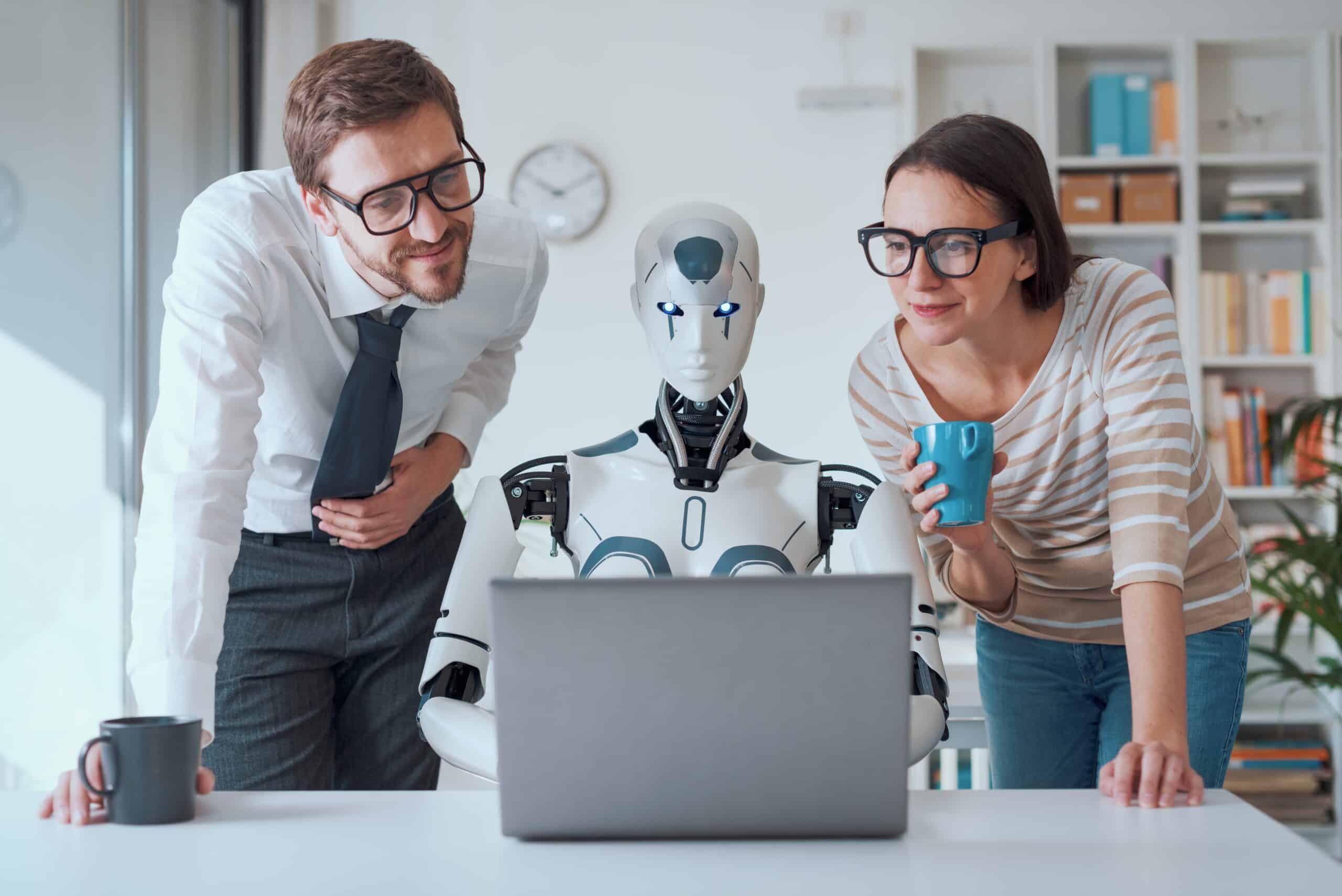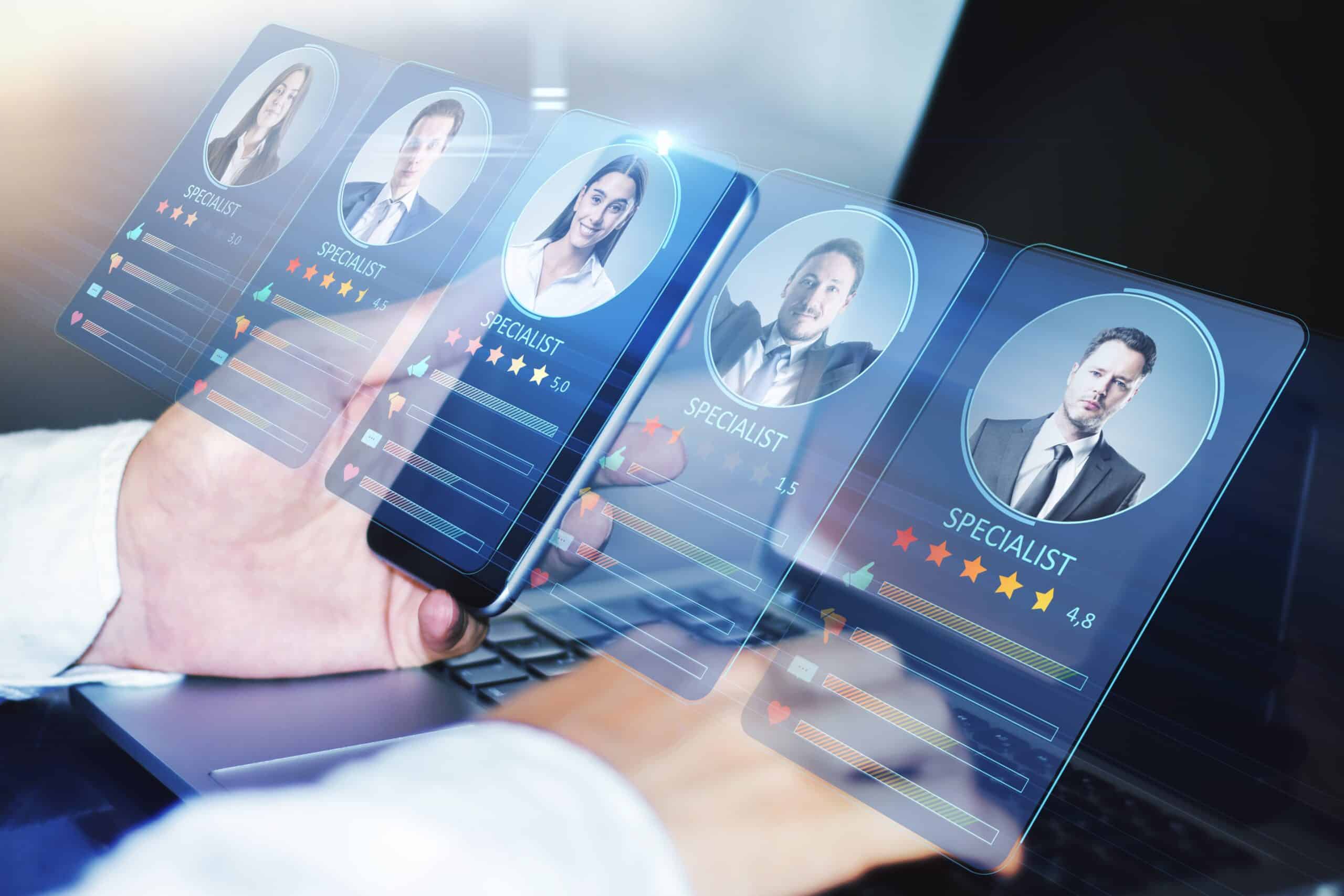- Wearable technology improves employee safety and productivity
- Lifelong learning is essential for success in the digital workplace
- How technology is changing workforce management
- The future workplace is remote
- Is the gig economy the future of work?
- The rise of AI recruitment
- The changing role of the manager
Technology has had a major impact on the way we work. More and more basic, repetitive tasks are being automated. It’s important that we rethink our roles and learn new skills. How do we change people and organisations and how do we get the employee of the future on board with these changes? What will our jobs and work in general look like in the future? New working models will emerge, the quantified workplace will precisely measure our performance, and existing hierarchies will start disappearing. 21st century skills will be indispensable in the future and we’ll increasingly transition from permanent contracts to the gig economy. Thanks to VR and hologram technology, we will be able to work remotely with people from all over the globe.
Wearable technology improves employee safety and productivity
How do we understand what makes one staff member perform better than another, and how do we create a more efficient and productive workforce? By getting a better sense of the employee experience. Thanks to advancements in IoT and sensor technology, as well as the proliferation of mobile devices and wearable tech, companies can easily access near limitless amounts of data about the activity, health, and wellbeing of their employees. This information can be used to identify trends and make adjustments that will make employees happier, healthier, and – best of all – more productive.
A recent study suggests that wearable devices increase employee productivity by 8.5 per cent and increase job satisfaction by 3.5 per cent. A team of researchers at Dartmouth have developed a new mobile-sensing system that can measure employee performance with a high degree of accuracy. Comprised of fitness bracelets, sensors, and a custom app, the system monitors both physical and emotional signals produced by employees over the course of a day, including their heart rate, stress levels, sleep patterns, calorie consumption, weight, location, physical activity, phone usage, and ambient light. All of the gathered information is then analysed by machine learning algorithms and used to create each employee’s performance profile, providing a more objective evaluation than traditional performance reviews. “We set out to discover whether there was a way to move the needle from an almost backward way of assessing people’s workplace performance to using more objective measures,” explains Andrew Campbell, computer science professor at Dartmouth College. “We want to use that information to empower workers, tell them whether they’re being influenced by levels of stress or sleep or other factors that may not be immediately obvious to them.”
The Australian supermarket chain Woolworths recently announced plans to equip 100 of its workers across three distribution centres with wearable devices. Basically a wearable sensor that attaches to clothing, the SoterSpine device monitors what’s happening to the employee’s musculoskeletal system throughout the day and warns them if it detects movements that could potentially result in injury, such as twisting, bending, picking up objects from the floor, or spending extended periods of time in a static work posture. Each detected event is analysed by an algorithm, which assigns it a risk score and relays the information to the employee’s smart device, along with suggestions on how to reduce their risk of injury. Finally, data from all employees is aggregated and forwarded to the employer, allowing them to identify trends and high risk areas, target opportunities for improvement, and direct future training efforts.
Lifelong learning is essential for success in the digital workplace
To succeed in the workplace of the future, people will have to redefine their roles and learn new skills. And the most important 21st century skills to have are critical thinking, creativity, communication, problem solving, and technology literacy. Lifelong learning will become a growing priority, giving rise to a new education model – Learning-as-a-Service (LaaS).
The McKinsey Global Institute estimates that as many as 375 million people worldwide may be forced to switch occupational categories by 2030. That’s why it’s essential that people take a more proactive approach towards their own lifelong learning and take advantage of the new opportunities brought about by digital technology. They will have to keep learning and find a way to reinvent themselves in order to remain competitive in this increasingly digital world.
“Being a lifelong learner is probably the most valued attribute in these times of digital,” says Ravi Kumar, president at the digital services firm Infosys. “At present, you complete your higher education, you start a job, and you think you are done with learning. I think you need to change that in favour of nurturing the mindset of being a lifelong learner, because what you learn today will become obsolete in a few months or a year. And yet, you should be prepared to continue to grow on your career path. The only way to do this is to be on this constant learning journey. If you want to stay relevant, you have to be on top of all that’s new around you, all the change around you, and act accordingly.”
How technology is changing workforce management
Companies are increasingly turning to AI to perform management tasks like recruitment, job interviews, and staff training. Advanced technology is also used to quantify employee performance, and instead of being involved in micromanagement, the manager of the future is more of a role model who provides feedback and encourages his staff to work on their personal development. We will increasingly see cloud-based HR, and VR/AR will enable remote conferencing and training.
According to a recent report published by ResearchAndMarkets, the global human resource management software market is expected to reach a value of $30 billion by 2027. BambooHR is one of the leading cloud-based HR software packages available on the market. Aimed at small and medium businesses, it’s an all-inclusive, easy-to-use HR management system that offers a comprehensive set of features, including applicant tracking, benefits administration, employee onboarding, HR reporting, time-off tracking, and performance management. BambooHR also comes with a mobile app that enables you to access employee information and other functionalities from anywhere and at any time. It also supports electronic signatures, allowing your company to move away from paper forms. It can also process automated requests and approvals and send you reminders about things that require your immediate attention, such as employee anniversaries or performance evaluations.
The Tel Aviv-based startup Gloat recently launched a new career development platform that uses AI to match employees with new career opportunities. It also enables employers to determine which of their current employees may be good candidates for internal part-time projects, gigs, full-time positions, mentorships, or job swaps. Based on what employees list under skills and ambition, the platform suggests opportunities within the company to apply for. In case it doesn’t find a suitable position, it lists skills to acquire or improve to be more successful in the future. It also helps employees find mentors by suggesting people from other departments who possess the required knowledge. “As the first in our field, we are proud to be leading the way in helping enterprises evaluate their workforce, as individuals with unique skill sets and ambitions pave the way to maximise output while also increasing employee engagement,” says Gloat CEO Ben Reuveni.
STRIVR, a US-based information technology company that specialises in VR and customer experience, has developed a VR platform that allows companies to train their employees by immersing them in a virtual environment. The platform combines VR, learning theory, data science, and spatial design to offer training scenarios in customer service coaching, soft skills enhancement, health and safety training, and improving operational efficiency. Verizon has been using the platform to help its employees develop soft skills and teach them how to empathise with customers. This particular training scenario takes employees through a regular day at work, in which they complete various tasks and interact with customers. Some of these virtual customers aren’t very polite, and employees need to find ways to connect with them and calm them down. This involves considering what their day might have been like and what they expect to gain from the interaction. “The goal is not to port all lessons into VR, but to use the intense experiences VR can offer as teachable moments, ones that provide motivation for learners to engage more deeply in substantive material, and to facilitate novel and difficult conversations around the topic,” says Jeremy Bailenson, STRIVR’s co-founder.
The future workplace is remote
Emerging technologies are completely transforming the workplace and old hierarchies are finally given the boot. Flexible, open office spaces are increasingly replacing the fixed offices of the past. And as the benefits of remote work become evident, virtual offices will grow in popularity as well. We’ll have VR remote teams, use online brainstorming boards, and more and more people will work as digital nomads.
Although the coronavirus has forced a large number of people to work from home, the remote working trend was picking up pace even before the outbreak. The pandemic has however really fuelled its adoption, with approximately 34 per cent of workers in the US now estimated to be working from home. For many of them, it won’t be just a temporary solution, either. According to a recent survey published by the research firm Gartner, 74 per cent of companies plan to shift some of their employees to remote work permanently. It’s estimated that as much as 30 per cent of the entire workforce will work from home at least a couple of times per week once the pandemic is over. And technology is set to play a major role in this upcoming transformation.
The Taiwanese smartphone manufacturer HTC recently launched its Vive Sync VR meeting service. It allows you to send your avatar to an event and interact with other avatars, such as those of your colleagues or clients, in virtual meeting rooms for up to 30 people. Vive Sync supports different types of interactions, such as collaborative meetings, presentations, and press conferences, as well as various seating arrangements, ranging from small conference tables to auditoriums. Integration with Microsoft OneDrive allows you to virtually share files like images, videos, PDFs, and PowerPoint presentations with other people in the meeting or display them on a large screen. You can also take screenshots for later reference, while 3D drawing and annotation tools and a speech-to-text option allow you to reproduce real-life whiteboarding sessions and take notes through verbal comments.
Is the gig economy the future of work?
Driven by the changing nature of the job market and the rise of online platforms, more and more people are choosing short-term gigs over long-term employment. The gig economy is based on flexible, temporary, or freelance jobs, and can benefit companies as well as talent providers. Gig work is more adaptable to the needs of the moment and enables a flexible lifestyle. The gig economy offers clients access to a broader and deeper talent pool – for a shorter or longer period of time – and offers the provider opportunities all over the world that best match his or her expertise.
Approximately 57 million US workers, or 36 per cent of the overall workforce, are now part of the gig economy. A 2019 study published by Mastercard reveals that the global gig economy generated $204 billion in gross volume in 2018 and this figure is expected to increase to $455 billion by 2023. However, while the gig economy undoubtedly offers more flexibility, it also has certain drawbacks. Working in isolation can become lonely and depressing, which can be detrimental to a person’s health and affect productivity. This is why gig workers are increasingly choosing to work from coworking spaces. It allows them to benefit from the flexibility of the gig economy without having to miss out on human interaction.
The rise of AI recruitment
Companies are increasingly shifting towards connected, intelligent recruitment, based on AI assessments. This can greatly reduce the time it takes to fill job vacancies and lead to more socio-economic diversity. Recruitment processes are increasingly managed by software, centralising activities and improving efficiency so that recruiters spend less time on admin and more time on placing candidates. Augmented messaging software can help track the applicant’s behaviour so the recruiter can understand what type of communication this person best responds to. Chatbots can be used for providing job candidates with constant updates on their job application process. Instead of candidates submitting CVs, recruiters can deploy assessment tech – technical, functional, and psychometric assessments – to evaluate a candidate’s suitability for a role. This sector is also increasingly making use of video interviews that may be enhanced with facial recognition and micro expression analysis tech to make predictions on how a candidate will perform.
The French pharmaceutical giant Sanofi is just one of a growing number of companies today using artificial intelligence to identify the most promising candidates. Over the last two years, the company has been using an algorithm to evaluate interns in China and determine whether they would be a good fit for the organisation. Once the candidates answer a series of questions that revolve around qualities like teamwork, courage, respect, integrity, and willingness to keep learning, the algorithm proceeds to identify personality-based characteristics shared by the company’s existing successful employees. The idea is to find candidates who share a similar corporate culture and reduce the number of employees who leave early. Only the candidates shortlisted by the AI can then proceed to an actual interview with the HR staff.
Aerospace behemoth Airbus recently unveiled a new chatbot tool named Bessie. Developed by Berlin-based software company Jobpal, Bessie is designed to streamline candidate engagement and free recruiters from having to perform repetitive tasks by instantaneously answering any questions a job applicant might have. Trained on a dataset that consists of the most common candidate questions and most common answers from recruiters, the chatbot was deployed on the company’s careers site and currently handles more than 12,000 interactions per month. In addition to helping Airbus attract the best and brightest minds in engineering and manufacturing by offering a more convenient and personalised experience, Bessie also helps convey the brand’s personality and better organise its listings to match current trends and preferences.
The changing role of the manager
Of course, the future of work also requires a new type of manager, one who challenges the status quo and is willing to abandon old and tired practices. As millennials are great team players who don’t do well with traditional authority, it only makes sense for old hierarchies to finally come to an end as well. Millennials are result-driven and expect their managers to be the same. The managers of the future offer employees opportunities to develop new skills and explore new positions.
Research firm Gartner predicts that emerging technologies like AI will take over 69 per cent of the average manager’s workload. No longer required to perform tasks like filling in forms, approving workflows, or updating information, the role of the manager will change dramatically. “Over the last few years, there’s been a surge in artificial intelligence applications dealing with everything from recruitment to learning and development, which are almost replacing the role of the manager, or at least making it easier,” says Sari Wilde, managing vice president at Gartner.
By letting technology take care of basic, repetitive tasks, managers will be able to focus more effectively on people, help them develop their skills, and support their wellbeing and resilience. “The people side of management is often lost when people are busy, but in reality the soft side is where the value comes from,” says Kevin Green, non-executive director and strategy adviser for six human capital firms. “It’s value-enhancing and it’s using people effectively to undertake the things that machines can’t do, such as coming up with ideas about how to do things differently.”
As digital technology transforms almost every aspect of our lives, the same is happening to our workplace as well. The office of the future will be vastly different from what we are used to today. Everything we do will be tracked and quantified, while technologies like AI and VR will ensure that we develop new skills and discover new job opportunities. AI will also increasingly decide on ‘the best man for the job’. For many of us, the office of the future will be no office at all, as a growing number of people will transition to working from home, using VR to collaborate with their colleagues.







